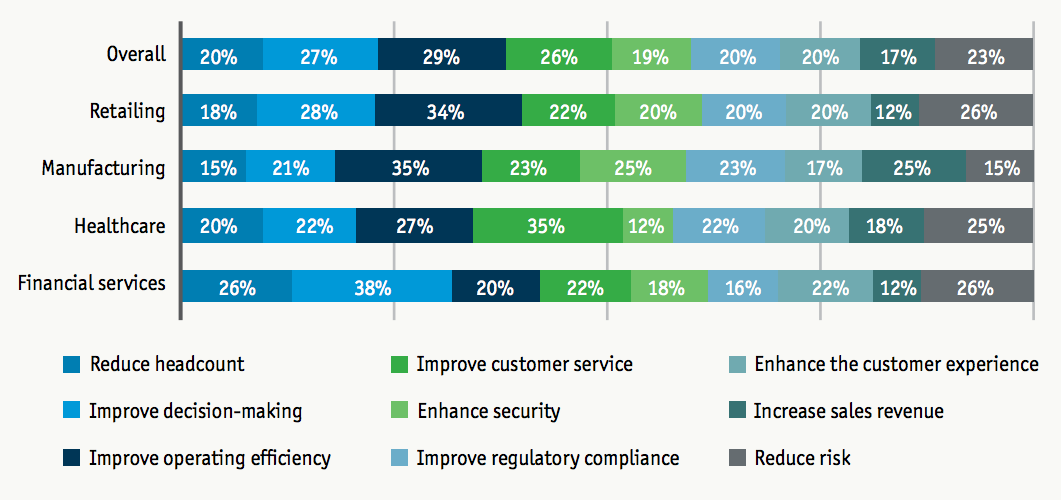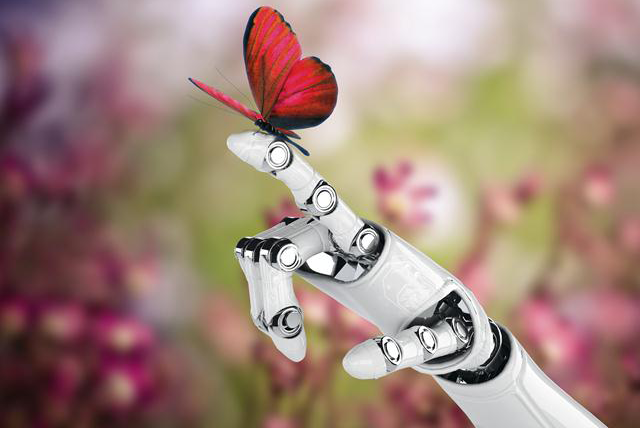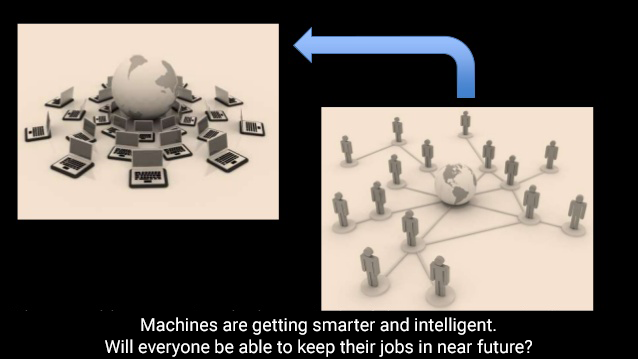The era of artificial intelligence (AI) is finally here! From SIRI in your smartphone to Alexa, thoughts that AI was only applicable in robotics that mimicked human beings are long gone. Now, artificial intelligence apps can drive cars, complete tax returns, reply to clients, and even security surveillance. As one of the fastest growing technology, some experts are arguing that what human beings can accomplish will be done by machines come 2050. Despite this, the understanding of artificial intelligence is very thin. In this artificial intelligence article, we delve deeper into this technology to demystify its types, applications, myths, and what it holds for the future.
What exactly is AI?
AI is a field in science involving everything relating to imbuing machines with intelligence, with an intention to making them emulate people’s reasoning capabilities. The AI processes include learning, thinking, and self-correction using speech recognition, expert systems, and machine vision.
The term artificial intelligence was first coined by an American Scientist, John McCarthy, in 1956. However, it has progressively grown and expanded to include virtually all areas of human operations. Artificial intelligence applications and systems are broadly categorized into either Weak AI or Strong AI. Weak AI is a narrow form of artificial intelligence that is defined to perform specific tasks such as driving cars or automated personal assistants. However, Strong AI is an advanced form of artificial intelligence application that includes inducing machines with cognitive capabilities.
The four main groups of Artificial Intelligence
In addition to the Weak AI and Strong AI, experts in Artificial Intelligence agree that it can further be categorized into specifics based on applications. Because of the rapid advancement in technology, the additional applications of AI in different fields have necessitated a deeper look into the definition. Though many people look at AI differently based on the impact of artificial intelligence in everyday life, here are the four main groups you should know about.
- Group One (Reactive machines). This group of AI can make predictions though it does not have the memory or apply learning. A good example is the Google’s AlphaGo and IBM’s Deep Blue. The applications of this group of AI are very narrow and cannot be replicated for other situations.
- Group Two (Limited memory). Unlike group one AI systems, the Limited Memory AI can store past experiences and use the info to make some actions. Note that these observations are not stored permanently. One great example is smart home devices such as smart Amazon’s Echo that follows personal preference for home heating, music, lighting, and other actions when you are at home. When you get into the house from work, the system adjusts everything depending on the learnt personal preferences.
- Group Three (Theory of Mind). This is an advanced level of AI that involves cognitive applications. It entails equipping machines with the capability to appreciate feelings, beliefs, and even intentions. Though this technology is yet to be rolled out, it is anticipated to change the entire perception of AI.
- Group 4 (Self Awareness). Unlike the previous three groups of AI, this category includes advancing self-consciousness. The machines will have self-awareness which means they can have feelings. This type of AI is not yet available.
Applications of Artificial Intelligence

Today, AI is applied in every area of human lifestyle. From the kitchen and security monitoring at home to doing office work such as support assistants, everyone is using it in one way or another. To appreciate the main applications of AI, here is a closer look at how it works.
AI intelligence works through the application of advanced algorithms for calculation, data processing, and reasoning automation. Using specialized computer software, computerized machines and devices are programmed to collect data, process, follow patterns, and use mathematical creation to determine the next action on their own. This is what makes the computerized support assistants capable of recognizing voices and helping clients satisfactorily. The main applications of AI applications in business and personal life include the following;
- AI in businesses: AI is used in business to perform the highly repetitive processes. Utilizing machine learning algorithms, AI is integrated into CRM and analytics platforms that uncover info to serve clients. Most companies are using chatboxes and building on artificial intelligence future applications to cut costs and enhance efficiency. This is how ai is transforming the workplace.
- Artificial Intelligence in education: Experts in AI always expound artificial intelligence definition using its application in education. AI helps to automate the evaluation of learners, grading, and even special tutoring. In future, AI could greatly alter the way and where people learn.
- AI application in finance: AI is applied in personal finance using apps such as Turbo and Mint Tax, gathering personal data and even advising clients. It is also used in advanced Blockchains and Cryptocurrencies to help users send, receive, and trade in Bitcoins.
- AI application in healthcare: AI applications in medical practice include diagnostics and complex procedures such as surgery. It is also used in healthcare education and virtual medical assistants.
- Uses in natural language learning: These are applications that recognize and process commands to generate actions. This is a common application in smartphones, home appliances, and motoring.Other applications of AI include flying drones, language translation, detecting crop diseases, handling insurance claims, designing logos, and writing music.
What is the difference between AI and AR (Augmented Reality)?
Often, people confuse AI and AR (Augmented Reality). Though both of them utilize advanced computing algorithms, there are huge differences between augmented reality with artificial intelligence. While AI entails enhancing the machine’s capability to learn, reason and replicate human like behavior, Augmented Reality entails making virtual environments look real to the human senses.
The main difference between artificial intelligence and augmented reality on a technical point of view is that one is real while the other one is entirely virtual. AR is a 3D and computerized type of environment that is manipulated by and interacted with people. Using devices such as headsets and omnidirectional treadmills, people can become part of the virtual world and manipulate virtual objects.
The impacts of Artificial Intelligence

Artificial intelligence is considered the hallmark of human advancement. It comes with numerous benefits such as enhancing industrial productivity, promoting customer satisfaction, and enhancing predictability. The impact of artificial intelligence in everyday life is very diverse in areas such as security enhancement, smartphones’ SIRI, and education through special tutoring assistants. From business to personal applications, AI is expected to keep growing and reaching more areas of people’s lifestyles. However, the artificial intelligence future predictions also include numerous negative implications that often make people go slow on adopting related technologies. Here are the main negative effects of artificial intelligence.
- Because machines can do what people can do, there is a great risk of diminishing jobs. If a machine can be a personal assistant and do the job with no errors, many companies will opt not to hire staff to do the same job.
- Just like AI can be programmed to do good things, it can also be programmed to do something wrong. This is one of the most dangerous risks of artificial intelligence. We are in an era when some criminal minds do not care about the outcome of their actions. For example, just like cybercriminals design viruses such as the Ransomware, there is a high risk of AI being designed to do the wrong things.
- One of the dangers of AI technology that every computing expert points at is the risk of creating a learning machine but develops a destructive method of attaining the objective. Think of a client asking an obedient and intelligent car to go to a destination as fast as possible. It could run over people and cause a lot of damage to achieve the goal.
Misconceptions about Artificial Intelligence

Despite the dangers of AI technology, one thing is clear; the future is headed towards more machine learning. As a business or even individual, it is important to move with the technology changes or get rendered obsolete. What is crucial is installing strong restrictive policies to ensure that AI is always applied for good reasons. To commence on the positive move approach, you need to start by appreciating key misconceptions about AI.
- AI will end people’s jobs: This is a great misconception. Though AI is expected to take over many jobs, however, it could indeed enhance job creation. Because of the enhanced efficiency through robotics and Big Data handling, more people will be pushed into supporting roles. For example, a highly effective AI anchored e-commerce store would require equally efficient supply chain.
- Machines can have goals using AI: This is a myth: Though technology has advanced so much, the machines can only advance the human goals.
- Robots are AI: This is not true. Many robots and self-propelling devices are simply machines programmed to move.
- Analytics and big data are AI: This is incorrect. These and others such as data mining and data science are only great things that can be done by computers.
- Search engines are artificial intelligence: Though they are indeed advanced technologies, they are not AI. Because the user can search for content, he/she contributes to the intelligence. What computers do is identifying the patterns and pull it out when people research. However, the computer does not actually know what it is pulling out.
AI technology over the recent past has developed at a very fast rate. While the understanding and myths around AI have caused a lot of confusion, the truth is that these technologies are targeted at enhancing human capacity to address issues facing them. It is, however, true that the technologies could cause a lot of harm when used for the wrong intentions.

